|
Theoretical Physics
Multislit
Gauss Beam
|
Rect 0.1.0b |
|
| |
For the first seven pictures, the transversal scale is invariable, only the longitudinal position is increased. From the seventh to the eighth picture the transversal scale range is increased, to show more of the angular diffraction pattern, while that, the longitudinal position is unchanged. In the picture series starting with the eighth picture, both longitudinal and transversal scale are increased simultaneously, keeping now the aspect ratio constant. Therefore the pictures show then an angular picture, with same angles at same position in every picture.
The diagram on the right side shows always a profile through the x axis of the 2D diagram at y = 0. With increasing depth the pronounciation of the lobes increases, until it reaches the final complete separation in quasi-infinity. Furthermore, notice the high intensity at the edges of the aperture in the nearest field. This effect is known to be typical for diffraction apertures, when one watches at the aperture their edges seem to be brightly glaring.
Für die ersten sieben Bilder bleibt die transversale Skala invariant, es wird lediglich die longitudinale Position erhöht. Vom siebten zum achten Bild wird die transversale Skala erhöht, um einen größeren Winkel des Beugungsmusters abzudecken, währenddessen bleibt die longitudinale Position ungeändert. In der Bilderserie vom achten Bild an wird sowohl die longitudinale als auch die transversale Skala vergrößert, während ihr Verhältnis nun gleich bleibt. Daher zeigen die Bilder dann ein Winkelbild, mit selben Winkeln an der gleichen Position in jedem Bild.
Das Diagramm auf der rechten Seite zeigt stets einen Schnitt durch die x-Achse des 2D-Bildes bei y = 0. Mit steigender Tiefe vergrößert sich die Betonung der Lappen, bis schließlich die vollständige Separation in der Quasi-Unendlichkeit erreicht wird. Weiterhin beachte man die hohe Intensität an den Kanten der Beugungsapertur im nahesten Feld. Dieser Effekt ist typisch für Beugungsaperturen, wenn man die Apertur beobachtet, dann scheinen ihre Kanten hell zu leuchten.

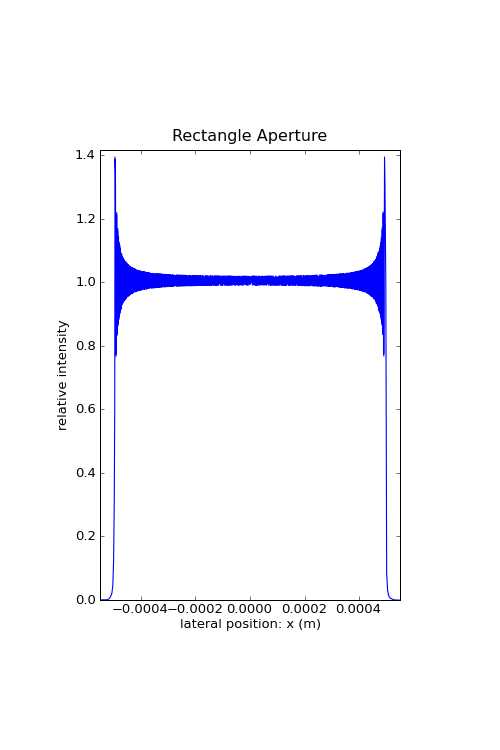
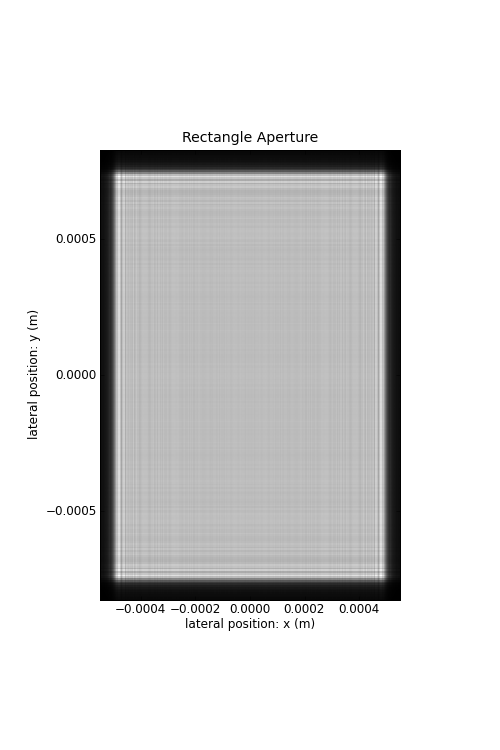
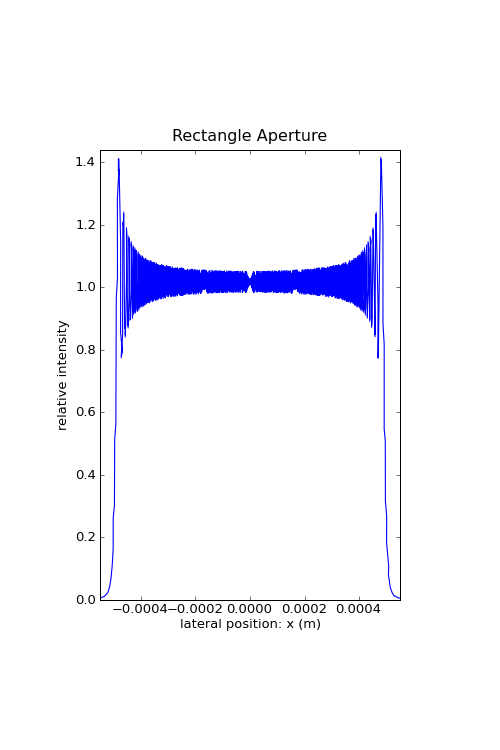
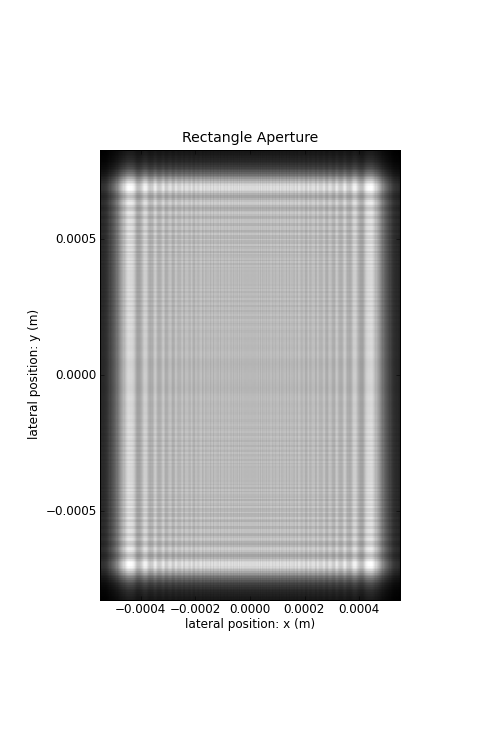

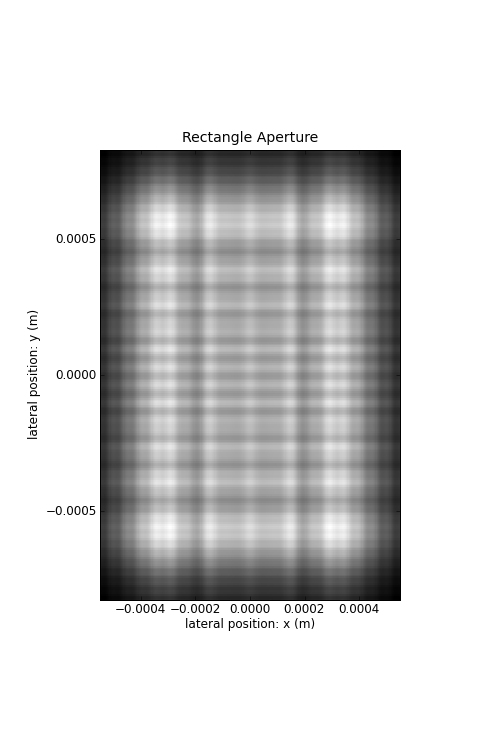
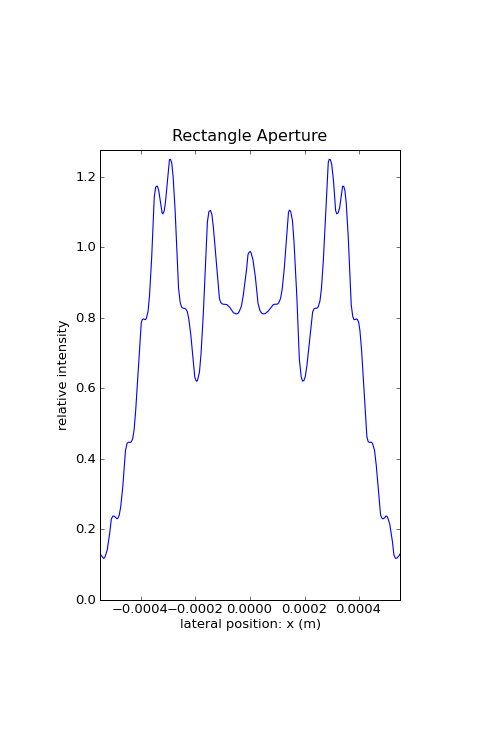
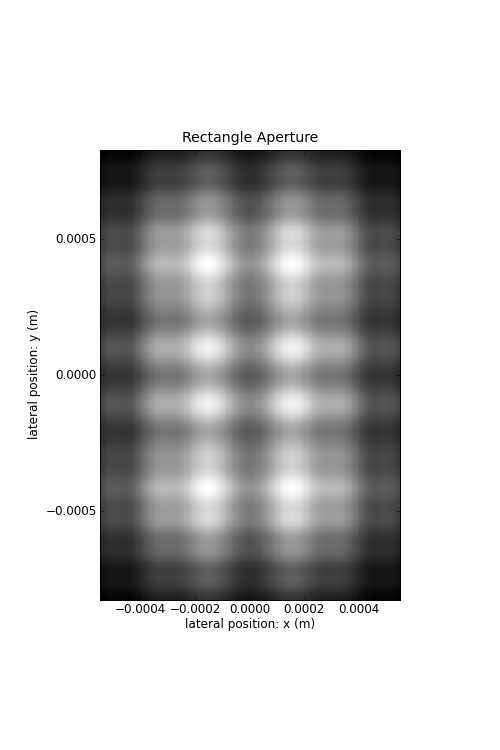

Maintained since: 7/09
$Last changed: 7/09$